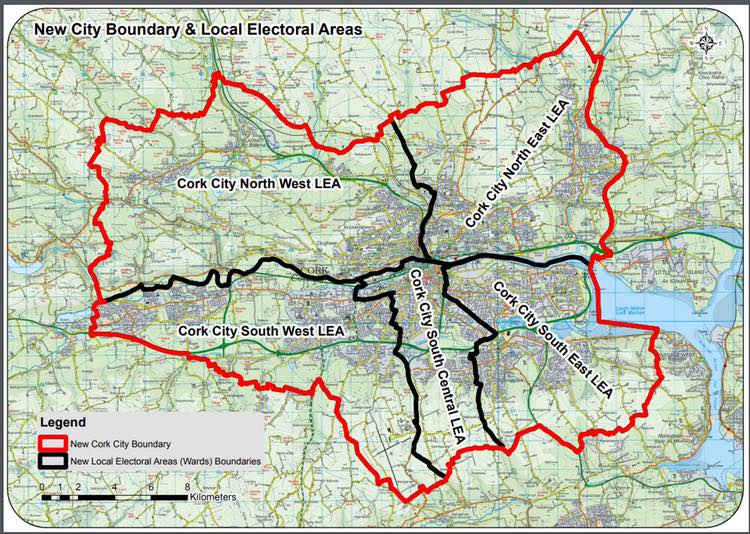
In a historic day for Cork City, tomorrow Friday, May 31 2019, the city will increase fivefold in size and will welcome 85,000 new residents.
Due to the first extension of the city boundary in over 50 years, Ballincollig, Glanmire, Douglas, Frankfield, Grange, Blarney, Tower and Whites Cross will become part of what is a ‘new city’.
From Friday, Cork, which is earmarked as the fastest growing city in the country under the National Planning Framework, will be home to over 210,000 people. It’s projected that the city’s population will continue to grow over the next 20 years reaching over 350,000 by 2040.
Over 400 public services will transfer to Cork City from the County as part of the expansion of the city. Up to 550 km of roads, 990 social housing homes, nine cemeteries and three libraries will become part of the new city.
Both Councils have been working together for several months to ensure a seamless transfer of services. Up to 134 staff have transferred to Cork City Council from Cork County Council including gardeners, school wardens, library staff, general operatives, tradespersons and firefighters. These staff will be operating at depots, parks, libraries and at emergency incidents across the city. A further 70 new posts are also being filled.
Lord Mayor, Cllr Mick Finn said: “As we welcome communities previously in County Cork to the city, we look forward to them bringing their expertise and experience with them. Tidy Towns organisations, community groups and services have transformed towns on the periphery of the city and enhanced the quality of life for residents. Joining that together with the fantastic community work undertaken by residents of the existing city will help inform the work of the newly elected Cork City Council”.
Chief Executive Ann Doherty said: “Cork is going through a period of unprecedented economic growth with up to half a billion euro of development underway or in planning in the city. The historic expansion of the city allows Cork City Council to plan for a city of sustainable urban growth and realise Cork’s potential as a city of scale. We looking forward to working with communities in the new city in the months ahead.”.
Notes to Editor:
Cork, like most cities worldwide, has a history of boundary extensions. The city was expanded in 1840, 1955 and 1965. In the last extension, areas like Model Farm Road, Fairhill, Ballyvolane, Glasheen, Wilton, Ballinlough and Blackrock village all became part of the extended city.